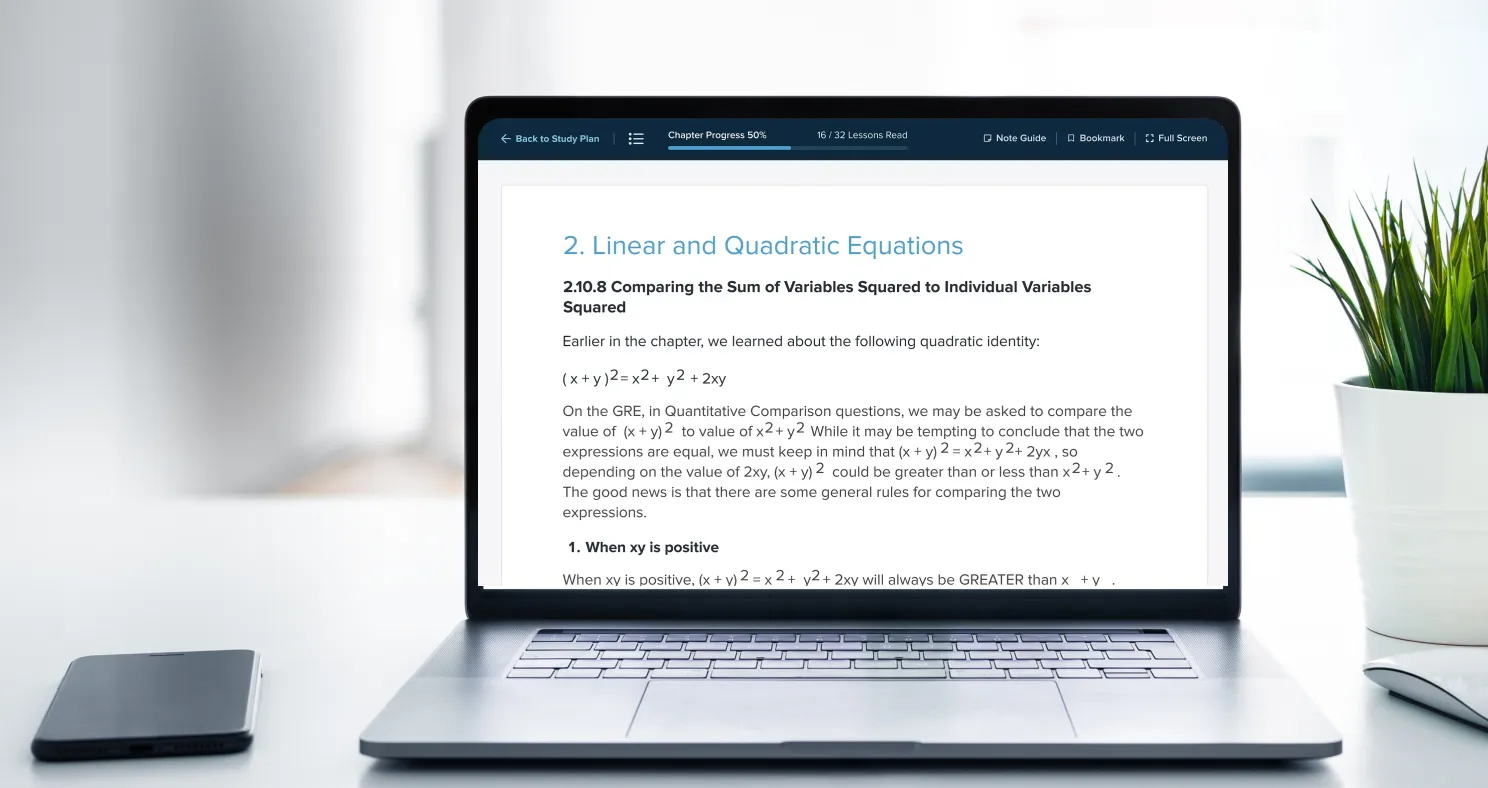Question
A manager must assign nine out of ten workers to three different teams. If each team is composed of three workers and no worker is allowed to be on more than one team, in how many different ways can the three teams be formed?
100 × 10
130 × 15 × 2
 Scott Woodbury-Stewart
Founder and Expert GRE Instructor
Scott Woodbury-Stewart
Founder and Expert GRE Instructor

Text Solution:
The best approach to this problem is to systematically analyze the possible combinations for each team. The manager must assign three workers to the first team, so using the box and fill method, we’ll make three boxes. Since she chooses these workers from among the ten workers at her disposal, place a ten in box one.
She now has nine workers from whom to choose. Place a nine in box two.
She now has eight workers from whom to choose. Place an eight in box three.
Because this is a combination, divide the product of the boxes by the factorial of the number of boxes.
Thus, there are 120 possible ways to select the first team. Let’s now consider what’s different about the second team. She must still choose three workers for the second team, but since three workers were already assigned to team one, only seven workers remain from whom to select. The box and fill diagram for the second team would be as follows:
She must also assign three workers to the third team, but she has already assigned six of the ten available workers. Thus, only four workers remain in the pool.
Finally, since the order in which the teams are chosen is not important, we should divide the result by 3! = 6. Therefore, there are = 2,800 possible team configurations.
Note: If it is not clear why we are dividing the product 120 × 35 × 4 by 3!, notice that this product contains many duplicate three team formations. This is best explained using an example: suppose we had only two people, and suppose we were asked to determine the number of ways to form two teams of one. Clearly, there is only one way to do this, however, if we apply the same procedure to this simplified version of the question, we obtain 2C1 × 1C1 = 2. Notice that there are indeed two possibilities for the first team, but no matter which person we choose first, we end up with the same two teams. That is why we need to divide the product 2C1 × 1C1 by 2! to get the correct answer.
It might also be helpful to see a version of this question where we would not divide by 3!. Suppose that the manager had to form a red team of 3, a blue team of 3, and a green team of 3, from among 10 people. Let's compare this version of the question to the original version. Suppose that the manager ends up choosing teams A, B, and C. In the modified version of the question, there are six outcomes involving these three teams:
1. Team A is the red team, team B is the blue team, team C is the green team
2. Team A is the red team, team C is the blue team, team B is the green team
3. Team B is the red team, team A is the blue team, team C is the green team
4. Team B is the red team, team C is the blue team, team A is the green team
5. Team C is the red team, team A is the blue team, team B is the green team
6. Team C is the red team, team B is the blue team, team A is the green team
The answer to the modified question is indeed 120 × 35 × 4, but in the original version of the question, all of the six outcomes above should be considered as the same outcome (i.e. the outcome that the teams A, B, and C are chosen). This is actually true for any three teams the manager could form out of the 10 people, which means the product 120 × 35 × 4 is exactly 3! = 6 times the true number of possible ways to form the three teams. That is why we should divide by 3! in the original version of the question.










